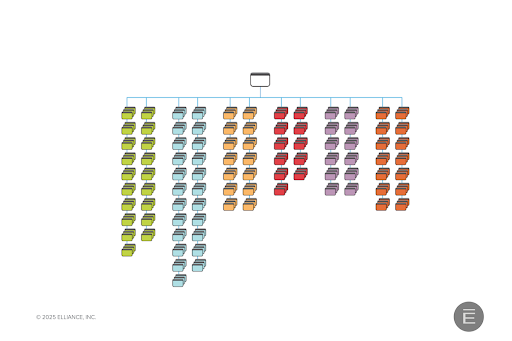| Sep 18, 2025
How Sitemap Chaos Leads to Challenges in UX, SEO and Analytics

Recently, we were tasked with creating a sitemap of a fairly large website with hundreds of sub-domains and several thousand pages for a public institution. The majority of the sub-domains on the site were related to individual departments, academic programs, research centers, faculty profiles, blogs, news and events.
The Website Challenges I Discovered
While trying to understand the existing sitemap structure, we faced the following challenges:
- Completely new navigation menus and breadcrumbs as we traversed pages/subdomains.
- Content for prospective audiences and internal audiences all fused together.
- Numerous versions of program pages scattered across departmental, admissions, centers and catalog pages/subdomains, which made it hard to know which information was authoritative.
- Active outdated events, alerts, profiles and unused domains.
- A site search surfacing seemingly duplicate content across multiple sub-domains.
- Confusing results on search engines, with no clarity about which information was authoritative.
- A 404 page that didn’t meet basic needs of prospective audiences.
- Google Analytics that couldn’t easily determine content popularity.
- Page architectures for similar things, like program pages, that aren’t normalized.
- A brand voice that was fractured.
What Led to This Chaos?
A few discovery interviews later, we began to understand the root causes of site chaos.
- Team challenges like decentralized content teams, siloed teams, and institutional politics.
- Inherited CMS system and site architecture from teams long gone.
- Poor site governance structures like lack of writing style guides, page architecture guides, content lifecycle policies, editorial standards, domain name policies.
- Absence of an institutional SEO/AI Keyword guide.
The Resolution
Our three decades of practice has shown us that to create a rational user experience, know that less is more and more is less, integrity of voice is money in the bank, people train themselves quickly on the norms of a brand website and expect those norms to be propagated across all sub-domains.
Guided by this knowledge, we:
- Created a new website map for prospect facing information, public-facing information and internal-audience facing information.
- Developed a content inventory mapping old content to the new sitemap.
- Created page architectures for key routers, academic program pages, news, events, faculty, departments, research centers, and other paradigmatic pages.
- Crafted governance guides like writing style guides, page architecture guides, content lifecycle policies, editorial standards, domain name policies, SEO/AI Keyword Guides.
The Reward
We are on our way to achieving streamlined user experience, enhanced brand reputation, consistent SEO/AI rankings, up-to-date content that is neither duplicated nor fragmented, a site search that surfaces authoritative information, websites analytics that answer simple questions like popular programs, departments, research centers, news and events.
If you would like to find a partner who understands the relationship between sitemaps, wireframes and content, consider partnering with us.
